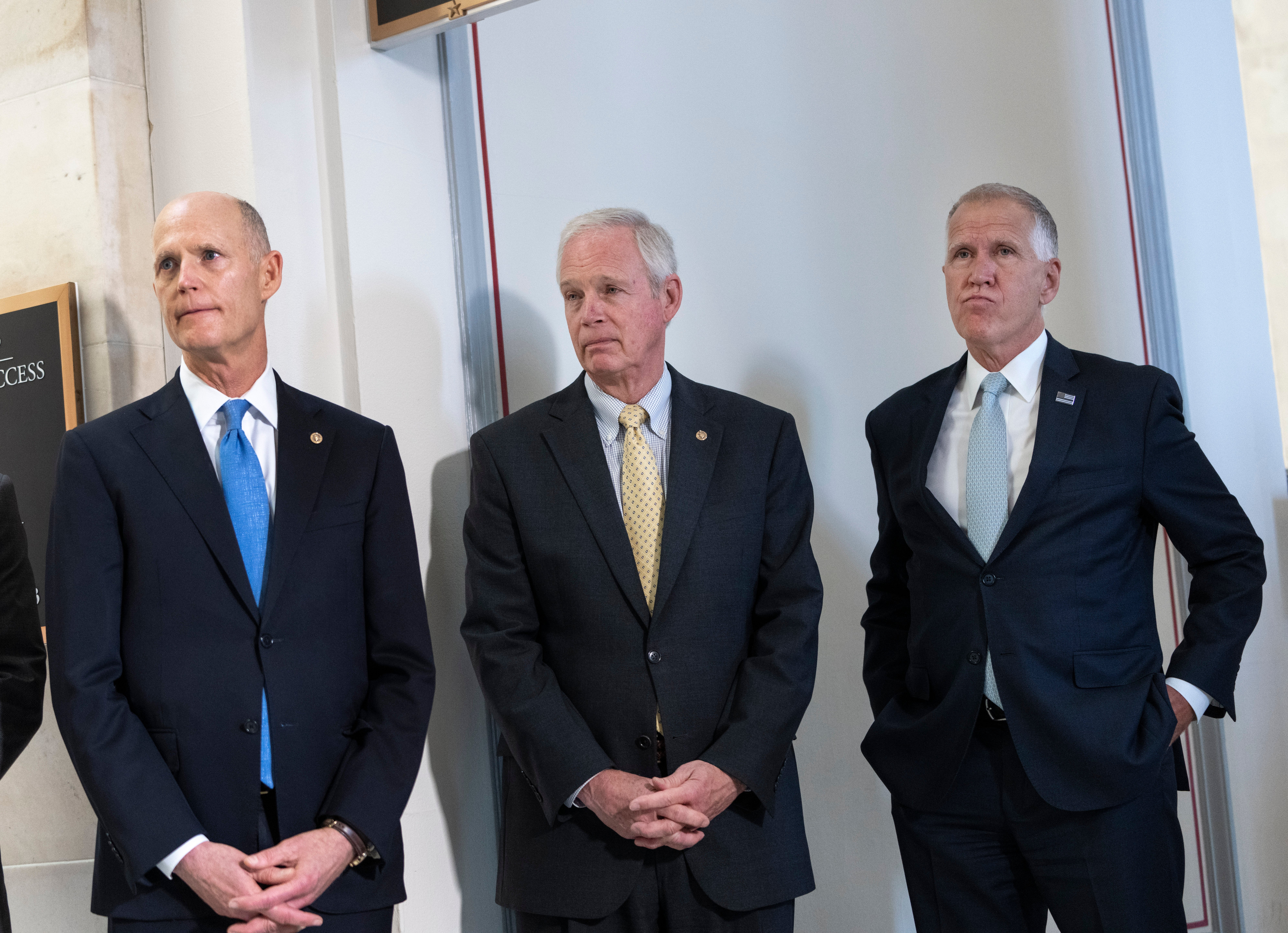Editor’s Letter: The Roe decision will reshape the midterms, and midterm elections created it
Republicans have absolutely decimated Democratic senators in rural midwestern and southern states for the past decade. That paved the way for the Supreme Court to overturn Roe v Wade, writes Eric Garcia


Politico’s leak of a draft ruling by the Supreme Court that would kill Roe v Wade reset 2022, which is fitting since midterm elections in the past decade paved the road to the end of accessible abortion in the United States. Many rounds of Democratic blame ignored midterm elections from 2010, 2014 and 2018, all of which led to Republicans confirming the Supreme Court justices who came to this decision.
Many political observers rightly characterise the 2010 midterm for Democrats using the same term Barack Obama used after the results: a shellacking. But that’s an understatement. In 2009, longtime Republican senator Arlen Specter of Pennsylvania switched parties as he faced a tough primary challenge. But Specter lost the Democratic primary to Joe Sestak, who lost to Pat Toomey.
That same year, progressive favorite senator Russ Feingold of Wisconsin lost his race to Ron Johnson while senator Blanche Lincoln of Arkansas lost to Republican John Boozman after a bruising Democratic primary by Bill Halter. All three Senators would win reelection in 2016 when Donald Trump won and voted to confirm all three of his judges.
In 2014, Democrats faced what senator Joe Manchin of West Virginia characterised as “real ass-whuppin.” In North Carolina, state house speaker Thom Tillis beat Democratic senator Kay Hagan in the nation’s most expensive Senate race at the time. Other Southern Democrat incumbents also perished. Mark Pryor lost to Tom Cotton in Arkansas and Mary Landrieu lost to Bill Cassidy in Louisiana.
In Colorado, Democratic senator Mark Udall mentioned abortion so much that the state press mocked him as “Mark Uterus”, and he ultimately lost to Cory Gardner. Democrats failed to hold the seats of retiring senators in Montana, Iowa, West Virginia and South Dakota. Meanwhile, senator Susan Collins won reelection comfortably that year.
That meant that when Justice Antonin Scalia died, Senate Majority Leader Mitch McConnell could block Obama’s attempt to replace the originalist justice. Republicans refused to give Merrick Garland – now US Attorney General – a hearing, and provided motivation for Republicans to turn out for Trump in 2016.
When Trump won, all of the above-mentioned senators voted to confirm Justice Neil Gorsuch and kill the filibuster for Supreme Court nominees. They would also confirm Brett Kavanaugh in 2018.
Kavanaugh’s hearings – and the accusations of sexual assault that he vociferously denied – contributed to the losses of some of the last rural Democrats in the country, including Heidi Heitkamp of North Dakota, Claire McCaskill of Missouri and Joe Donnelly in Indiana. senator Bill Nelson’s lack of Spanish outreach in Florida contributed to Rick Scott’s victory.
The Republican class of 2018 voted to confirm Justice Amy Coney Barrett’s 2020 confirmation and create the 6-3 conservative majority that will kill Roe v Wade (Collins, facing a tough race that year, voted against Barrett’s confirmation, saving herself).
While it is fairly clear that the ruling will lead to more restrictions on abortion in red states, how this affects the midterm elections is entirely unclear. A Washington Post/ABC News poll showed that 47 per cent of voters trust Democrats on abortion compared to 37 per cent of voters who trust Republicans. But it is not clear that it could anger enough Democrats to turn out – particularly when Democrats failed to pass legislation to codify Roe earlier this year.
Still, there is no doubt the court’s actions will have some impact on the midterms, which makes sense, since the midterms created this moment.
Yours,
Eric Garcia
Senior Washington DC correspondent
Join our commenting forum
Join thought-provoking conversations, follow other Independent readers and see their replies
Comments
Bookmark popover
Removed from bookmarks